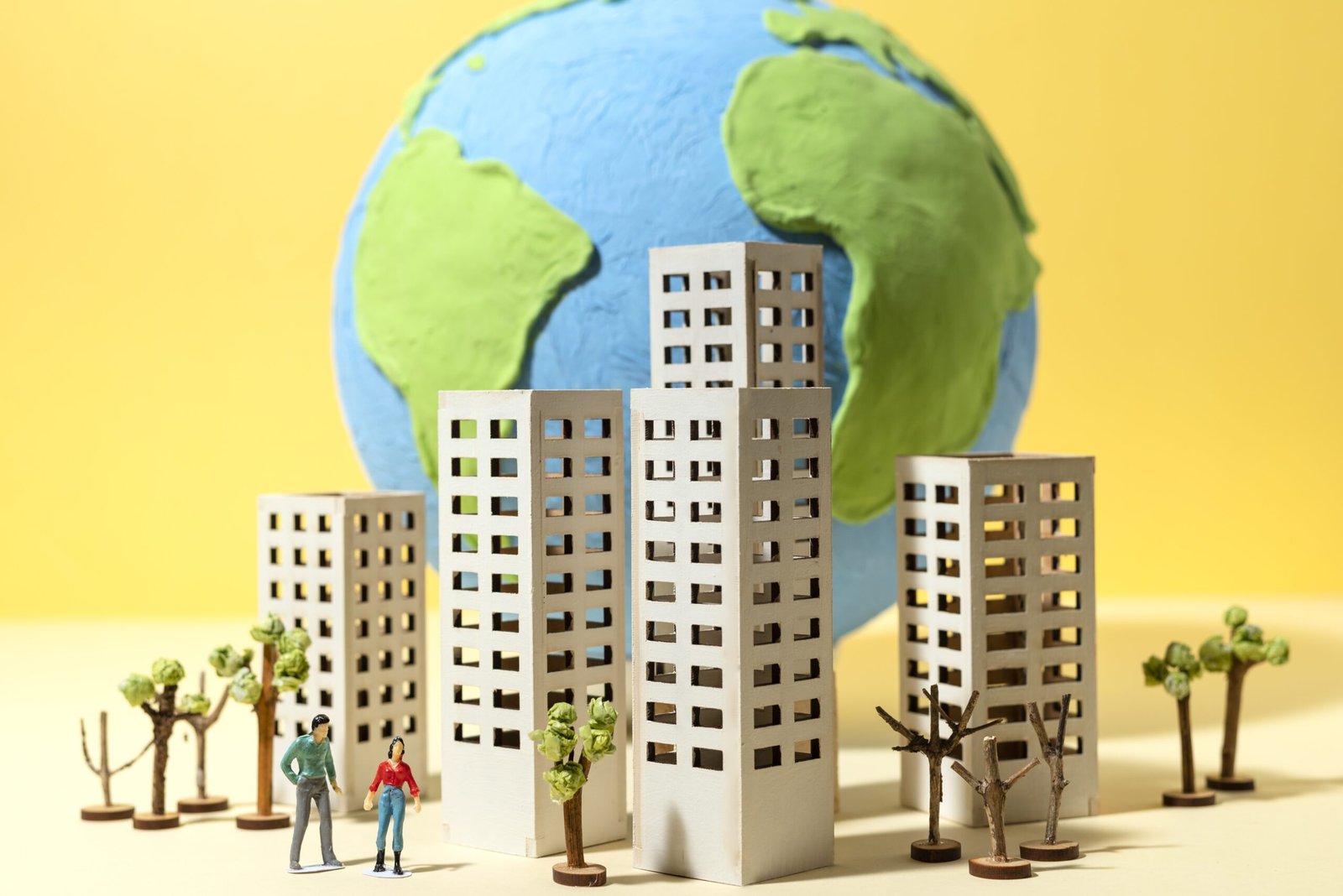Unlocking the Green Revolution: Explore Innovative Sustainable Real Estate Developments

Real estate has for a long time been a foundation of human progress, giving safe houses, businesses, and local area spaces. In any case, as worries over natural supportability develop, the land business is going through a wonderful change.
Creative economical land improvements are preparing for a greener future, where amicable conjunction between human advancement and nature is at the front.
In this article, we will Explore Innovative Sustainable Real Estate Developments, investigating state-of-the-art works on pivotal innovations, and their positive effects on both the climate and society.
Table of Contents
Introduction: Embracing Innovative Sustainable Real Estate Developments
The world is at a basic point, where the earnest need to address environmental change and asset exhaustion can’t be disregarded. Land designers, engineers, and metropolitan organizers are adapting to the situation, embracing manageability as a core value.
The incorporation of eco-accommodating practices limits natural effects as well as upgrades the general personal satisfaction for inhabitants and networks.
Green Building Design: The Foundation of Sustainable Development
At the core of manageable land lies a green structure plan. This approach includes a scope of techniques pointed toward lessening a structure’s natural impression while enhancing energy effectiveness. From detached plan standards to the utilization of privately obtained materials, green structure configuration makes way for a more manageable future.
Net-Zero Energy Buildings: Revolutionizing Energy Consumption
The idea of net-zero energy structures takes energy proficiency to a higher level. These inventive designs produce as much energy as they consume, frequently using inexhaustible sources like sun-powered chargers and wind turbines. By essentially decreasing dependence on customary energy matrices, net-zero structures add to a cleaner climate and diminished fossil fuel byproducts.
Vertical Gardens and Biophilic Design: Reconnecting with Nature
In an urbanized world, biophilic configuration offers a reviving arrangement. Consolidating normal components like vertical nurseries, green roofs, and indoor plantings, this approach encourages a feeling of association with nature. Past style, biophilic configuration advances further developed air quality, mental prosperity, and, surprisingly, improved efficiency.
Adaptive Reuse and Brownfield Redevelopment: Breathing New Life into Old Spaces
The approach of savvy innovation has pervaded the domain of land, leading to the idea of shrewd homes. Web of Things (IoT) gadgets empower mortgage holders to oversee energy utilization, security frameworks, and even apparatuses from a distance. This upgrades accommodation as well as adds to energy reserve funds and diminished natural effects.
Transit-Oriented Developments: Reducing the Carbon Footprint
Deserted modern locales and maturing structures are tracking down new reasons through versatile reuse and brownfield redevelopment. These practices include reusing existing designs for present-day use, decreasing the requirement for new development, and preserving assets. Such changes add to renewed networks and a decreased stress on lacking areas.
Travel Situated Advancements: Lessening the Carbon Impression
As metropolitan populaces keep on developing, travel situated improvements (TODs) give a reasonable arrangement. By advancing blended-use areas with simple admittance to public transportation, TODs lessen the dependence on confidential vehicles, accordingly bringing down outflows and easing gridlock.
Circular Economy Principles in Real Estate: Minimizing Waste, Maximizing Potential
The roundabout economy is building up some momentum in the land, moving the concentration from a straight “take-make-arrange” model to one that stresses reuse and reusing. From development materials to building parts, embracing round standards limits squander and broadens the life expectancy of assets.
Renewable Energy Integration: Harnessing Nature’s Power
Environmentally friendly power sources, for example, sun-oriented, wind, and geothermal are becoming essential to supportable land advancements. By bridging these normal wellsprings of force, properties can essentially decrease their carbon impression and add to a cleaner energy scene.
Eco-Friendly Materials and Construction Techniques: Building for the Future
The decision of develop materials and methods significantly affects a structure’s natural impression. From reused materials to low-affect development strategies, the fuse of eco-accommodating practices guarantees that new improvements are dependable while limiting mischief to the planet.
Green Certifications and Building Standards: Ensuring Quality and Accountability
Different green confirmations and building norms, like LEED (Initiative in Energy and Natural Plan), give a system to surveying an improvement’s maintainability execution. These benchmarks guide plan and development as well as act as a demonstration of a guarantee to natural obligation.
Community Engagement and Social Sustainability: Fostering Inclusivity
Reasonable land goes past the actual design, reaching out to the prosperity of the networks they serve. Drawing in occupants, cultivating social communications, and supporting nearby drives add to a feeling of having a place and shared liability regarding the climate.
The Economic Benefits of Sustainable Real Estate: A Win-Win Proposition
In spite of the misinterpretation that manageability comes at a higher cost than expected, supportable land offers significant financial advantages. Energy reserve funds, diminished functional expenses, expanded property estimation, and upgraded attractiveness are only a couple of the benefits that make manageability a reasonable venture.
Overcoming Challenges and Embracing Opportunities: The Road Ahead
While the excursion towards practical land is promising, difficulties like administrative obstacles, monetary requirements, and moving customer inclinations should be tended to. By cooperatively exploring these difficulties, the business can open remarkable open doors for development and positive effect.
Conclusion: Innovative Sustainable Real Estate Development
The way to open the green upheaval in land is set apart by development, cooperation, and a relentless obligation to maintainability. As groundbreaking engineers keep on spearheading pivotal practices, our constructed climate can flawlessly coincide with the regular world, guaranteeing an amicable future for a long time into the future.
FAQs (Frequently Asked Questions)
Q1: What exactly is sustainable real estate?
A. Sustainable real estate embodies eco-friendly practices in design, construction, and operation, minimizing environmental impact while enhancing quality of life for occupants and communities.
Q2:How do net-zero energy buildings work?
A. Net-zero energy buildings generate as much energy as they consume, often through renewable sources like solar panels and wind turbines, leading to reduced carbon emissions and greater energy self-sufficiency.
Q3: Are green certifications mandatory for sustainable development?
A. Green certifications are not always mandatory for sustainable development, but they provide a recognized standard for measuring environmental performance and can enhance a project’s credibility and value.
Q4: Can existing buildings be retrofitted to be more sustainable?
A. Yes, existing buildings can be retrofitted with energy-efficient technologies, improved insulation, and sustainable materials to reduce their environmental impact and increase overall sustainability.
Q5: What role do residents play in sustainable communities?
A. Residents in sustainable communities contribute by practicing eco-conscious behaviors, reducing energy consumption, supporting communal initiatives, and fostering a sense of environmental responsibility, thereby shaping a greener, cohesive neighborhood.



